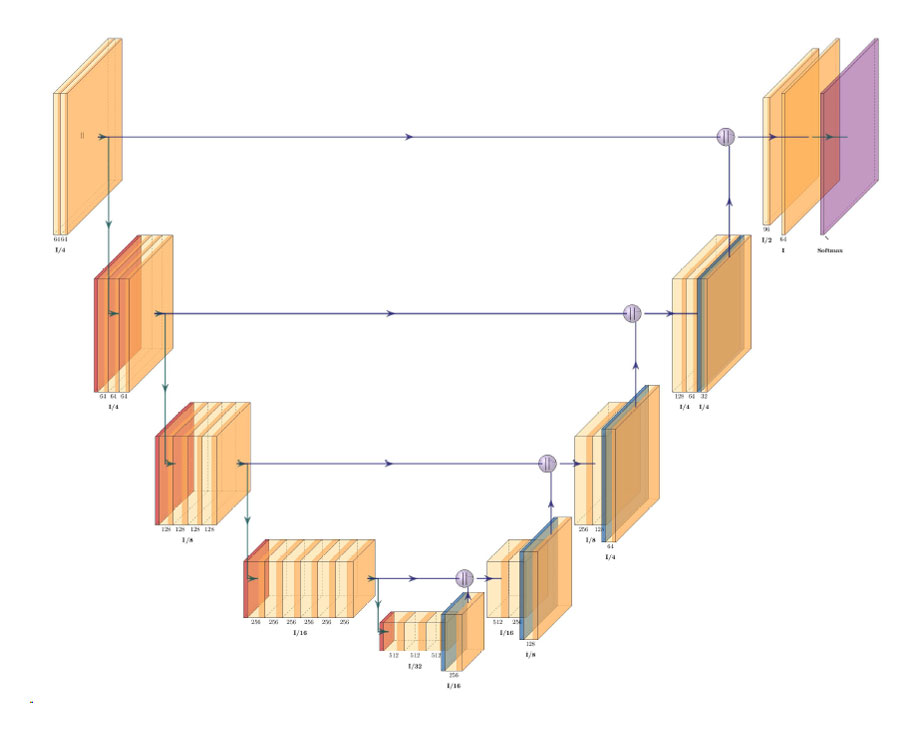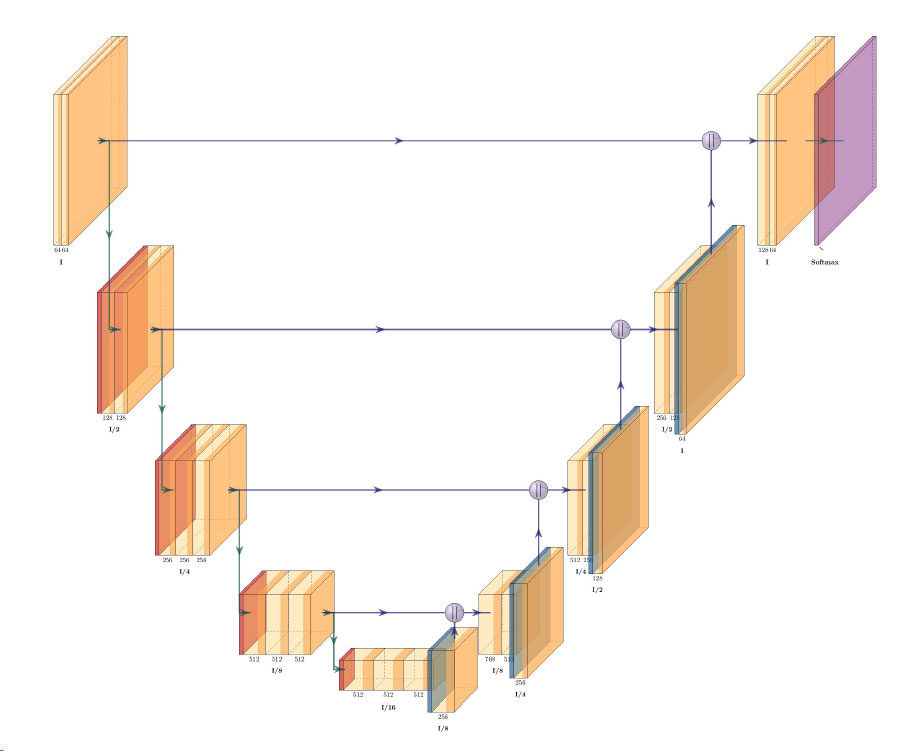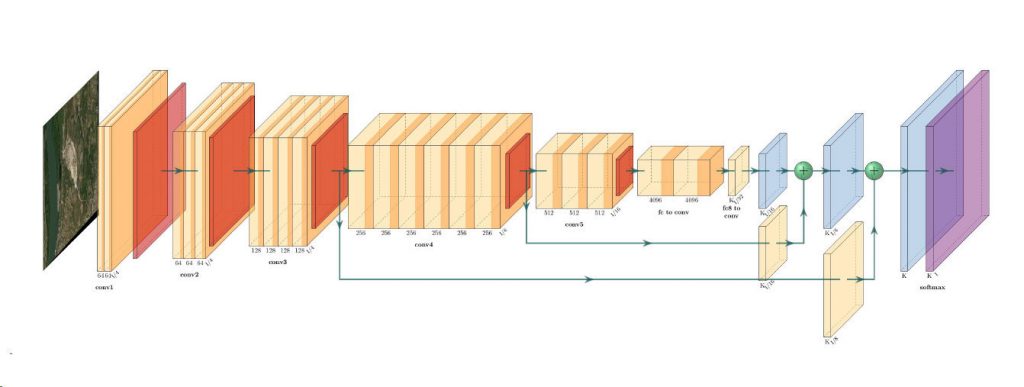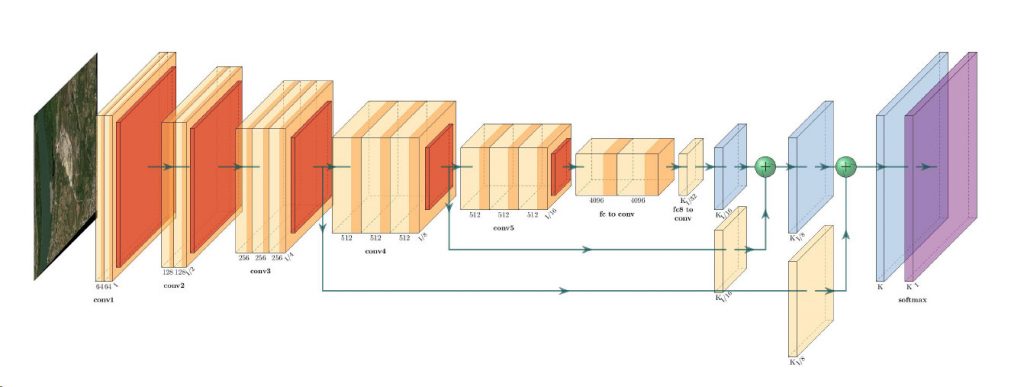Detecting Bark Beetle Damage in Bulgaria
- Skye Boag, Marketing Manager at European Space Imaging
In recent years, large outbreaks of the European spruce spark beetle (Ips typographus) have wreaked havoc to coniferous forests. The timely prevention of the bark beetle spread, for which it is critical to identify damaged trees in their early stages of infestation, as well as unhealthy trees which are preferred by the pest, is the only solution to manage the pest infestations and avoid catastrophic consequences. There are about 120 species of bark beetles in Bulgaria, and over 20 of them are trophically associated with spruces. However, detailed studies on damages caused by spruce bark beetle in the Chuprene Reserve have not been conducted. A study by Forest Research Institute-Bulgarian Academy of Sciences using satellite imagery provided by European Space Imaging partner, Vekom Geo Bulgaria, assessed the dynamic of attacks caused by the European spruce bark beetle within the Chuprene Reserve (Western Balkan Range) by applying remote sensing techniques.
THE FORESTY LANDSCAPE
The Chuprene Reserve was created in 1973 in an area of 1451.9 ha to preserve the natural coniferous forests in the Western Balkan Range in Bulgaria. The area is mountainous, highly rugged, with great differences in the altitudes and steep to very steep terrains. The tree vegetation is dominated by Norway spruce stands, which are 100–120 years old. Gradual changes in climate conditions are reducing the resistance of forest stands to the bark beetle, making them more susceptible to pest attacks. The first infestations by European spruce bark beetle (Ips typographus) were registered in Norway spruce (Picea abies) stands in the mid-1980s. While insects are ubiquitous disturbance agents that play important roles in the long-term dynamics of forest ecosystems, the bark beetle which is mostly a secondary biotic agent, are harmful to the healthy functioning of forests. They are considered to be the most destructive insect pests of spruce species in Europe and cause severe ecological and economic impacts.
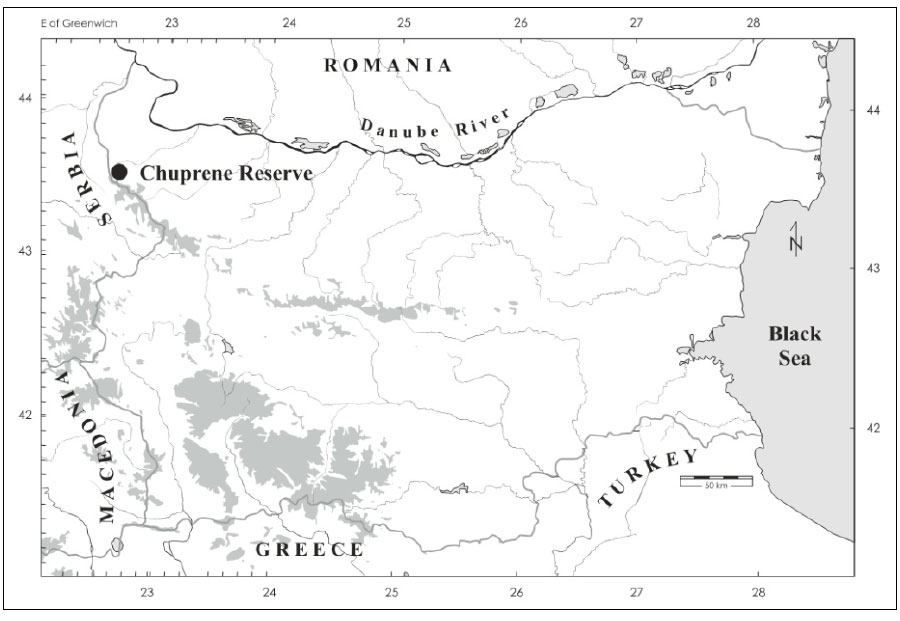
Location of the Chuprene Reserve in Bulgaria
The use of remote sensing techniques provides hidden insights to detect the location of stressed forest stands induced by insect pests and diseases outbreaks. Satellite imaging can provide data for large-scale monitoring of forest ecosystems to study the causal relationships of disturbance factors across spatial scales and understand relevant feedback processes. However, satellite data and other remote sensing techniques cannot directly identify biotic agents. Rather, they provide information for land cover type, as well as for the health status of vegetation, conducive to the breeding of vectors. This information is then used to identify and characterize the habitat in which pests and diseases spread out.
FILLING THE GAPS WITH VHR SATELLITE IMAGERY
Due to the planning period for establishing the stand’s health status, along with difficulties in accessing the terrain, it was impossible to collect the necessary multispectral data via UAV. To overcome this, multispectral VHR satellite imagery from the Maxar WorldView Constellation, collected by European Space Imaging, was chosen. The imagery met the criteria for high spatial, radiometric and temporal resolution and filled the missing data gaps by the other remote sensing techniques used throughout the study. Furthermore, the land coverage provided by the image covered almost the entire Chuprene Reserve in a single 50 cm pass, something not possible from UAV. Multispectral data from the WorldView Constellation can be provided in up to 8 bands (not including SWIR) making it suitable for a range of forestry applications.
UAV & ORTHOPHOTOS
High resolution images in 4 bands were collected and used to create NDVI’s (Normalised Difference Vegetation Index) that allowed for health assessments of the tree stands in the reserve. The NDVI allowed the examination of the trees’ vitality by capturing the amount of light that is absorbed and reflected and the chlorophyll available. The visualisation of the study area in the different colour ranges show the vitality level of plants, and indicates the area of healthy spruce stands (NDVI most often over 0.7), points to bark beetle spots (NDVI below 0.5) and trees infested (NDVI between 0.5 and 0.7). This is crucial for the identification of small areas and spots of vegetation, affected by pathogens in relatively heterogenous (from a geomorphological point of view) territories with dense vegetation.
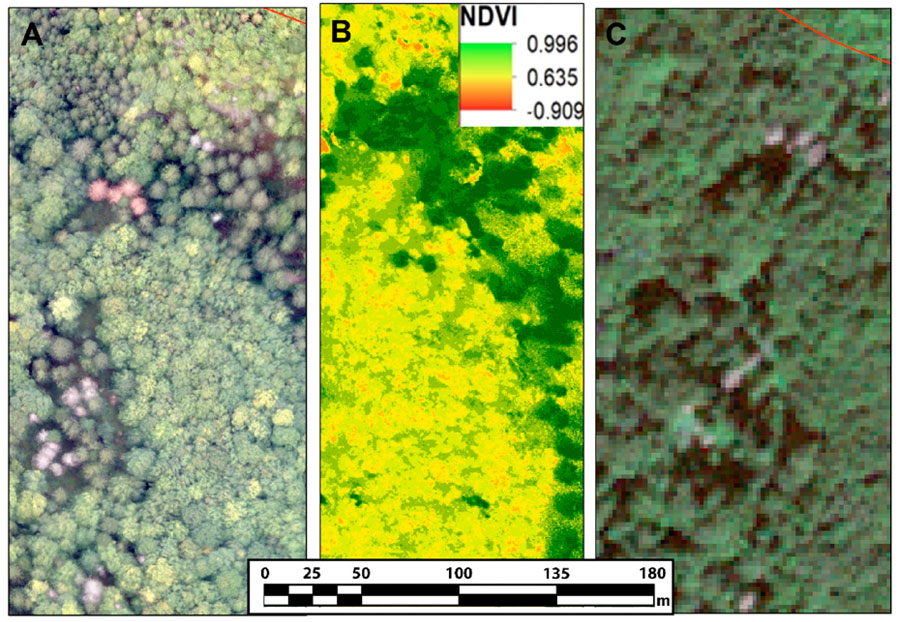
Comparison between resolution of the images from UAV and VHR Satellite Imagery. A) RGB orthophoto mosaic from UAV at 7 cm; B) NDVI from UAV multispectral images at 20 cm; C) RGB satellite image at 50 cm
COMPARING THE DATA
After RGB and NDVI models were generated from the data, it was loaded into ArcMap for further refining and classification extraction to clearly distinguish between healthy spruce stands and trees that are either infested by the bark beetle or dead. Subsequently, the classified data from NDVI in combination with the RGB image were used to accurately locate and determine the boundaries of areas affected by the pest.

GIS application for the determination of the boundaries and areas of spruce stands attacked on aerial (2011, 2015) and satellite (2020) RGB Images
RESULTS
The analysis of remote sensing data generated from orthophotos, UAV and VHR satellite imagery showed that the attacks of the European spruce bark beetle increased in the captured area of the north-eastern area of the Chuprene Reserve from 7.6 ha (2.4%) in 2011 to 44.9 ha (14.3%) in 2020. The number of bark beetle spots increased from 82 in 2011 to 287 in 2020. However, the average area of infestation decreased due to the appearance of many new infestations and new migration spots that formed in the period between 2017 – 2020.
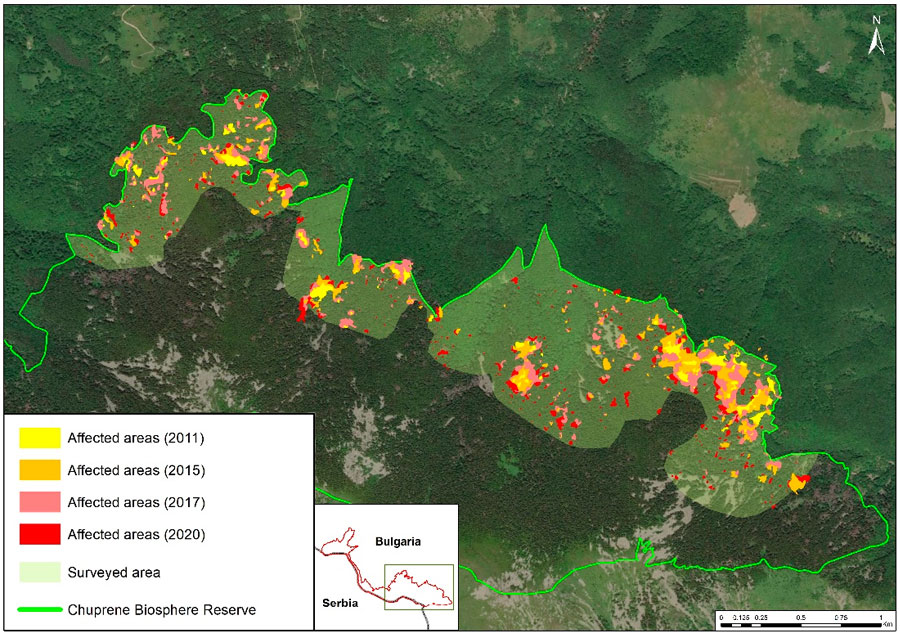
Bark beetle spots identified in the north-eastern area of the Chuprene Reserve. Analysis determined from 2011 and 2015 airborne images; 2017 UAV images and 2020 satellite images
The VHR satellite image covering the entire territory of the Chuprene Reserve identified that the bark beetle killed spruce trees on 137.4 ha, accounting for almost 10% of the total Reserve area. The oldest attacks and the largest outbreaks of spruce stands occurred in the northern (lower) part of the reserve. Analyses of remote sensing techniques in 107 journal papers published between 2015 and 2020 showed that, despite the emergence of new technologies and methods, multispectral data is still the prevalent source in forest health assessment.
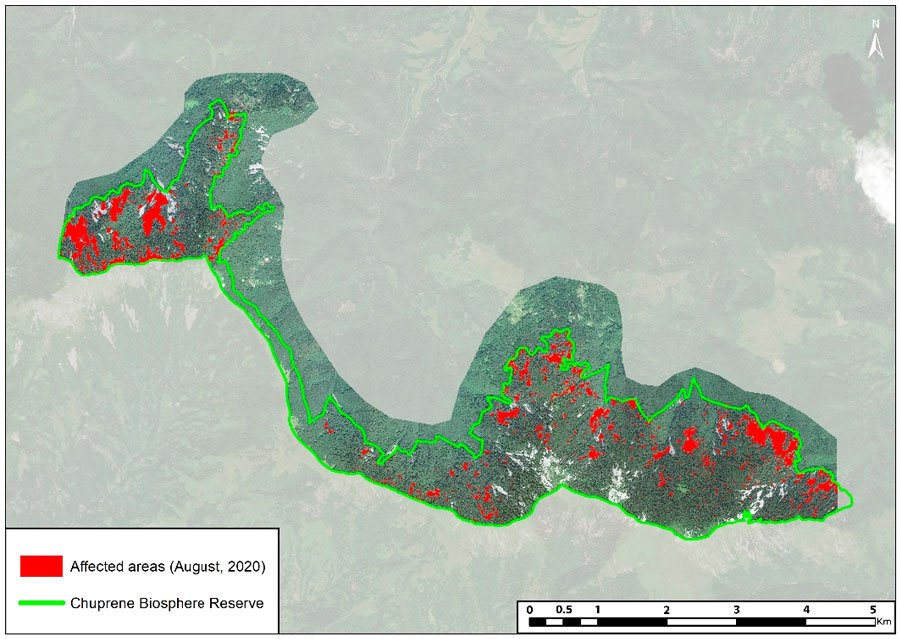
Mapping of bark beetle spots in the Chuprene Reseve from VHR Satellite Image (2020) provided by European Space Imaging
About Vekom Geo Bulgaria
Vekom Geo was founded in 1992 in Belgrade, Serbia. We are the official distributor of European Space Imaging in Bulgaria and Serbia. Vekom Geo has been recognized in the Balkans as a leader in the implementation of modern technologies in the field of remote sensing and GIS technology. With the experience gained over the years, today we offer our customers the highest class solutions focused on the collection, processing, updating and visualization of geospatial data.
We care about the needs of the market, putting the requirements of our customers first. The trust with which they return gives us motivation for continuous work, investment and innovation in order to continuously improve the quality of service both in Bulgaria and throughout the region. Learn more at https://www.vekom.bg/
About Forest Research Institute-Bulgarian Academy of Sciences
The Forest Research Institute was established in 1928 as specific Service for Forest Science, studying management and utilisation of forests in Bulgaria. Phenological observations on the growth of some native and introduced forest tree species were initiated; the first field sample plots and meteorological stations in forest ecosystems were established.
The mission of the Forest Research Institute is to carry out fundamental and scientific-and-applied investigations of forest ecosystems, which play a key role in the environment, both in its entity and inviolability and in conditions of anthropogenic impact, including mitigation of climate change consequences. The Forest Research Institute makes the theoretical and scientific basis for practical decisions with regard to forestry systems for management, forest genetic resources, protection of forests, erosion and flood control, as well as support of policies and legislation in the field of forest and nature conservation.
Read the Research Paper
Georgiev, G.; Georgieva, M.; Dimitrov, S.; Iliev, M.; Trenkin, V.; Mirchev, P.; Belilov, S. Remote Sensing Assessment of the Expansion of Ips typographus Attacks in the Chuprene Reserve, Western Balkan Range. Forests 2022, 13, 39.
Related Stories
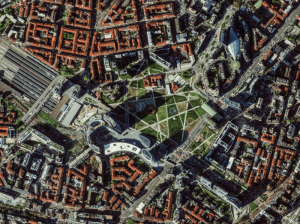
Europe’s Green and Digital Transformations with 25 Years of VHR Satellite Archive Data
Planning Europe’s future without knowing its past is impossible. The European Green Deal, Horizon Europe, the EU Biodiversity Strategy for 2030 and other policies all demand one thing: evidence. Not just today’s data, but years of history that show how our cities, forests, and coastlines have changed.
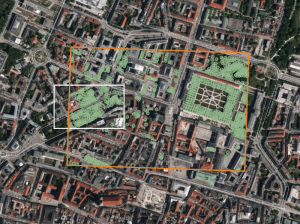
AI Uses 15 cm Satellite Images to Cut Costs and Increase Scalability in Forest Management and Urban Forestry
Forest managers across Europe face an impossible task: monitor millions of hectares with shrinking budgets while meeting increasingly strict EU environmental targets. But with the rise of AI and satellite technology, they now have new solutions at their disposal – smarter, cheaper, and more scalable – to monitor forest health, automate tree inventories, and plan sustainable logging. In this article, we introduce one of these solutions: an AI forestry algorithm developed by Arboair using 15 cm satellite data from EUSI.

GEOSeries: Extracting Insights From High Resolution SAR Imagery for Time-Sensitive Analysis
In this webinar, industry experts and advanced users of Umbra SAR data showcase how they transform SAR imagery into actionable insights in real-world mapping, monitoring and intelligence applications. See how NV5 and Umbra leverage ENVI SAR Essentials for advanced processing with time-efficient results, converting analytics into valuable intelligence.
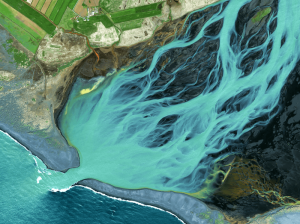
Using Satellite Imagery to Build Water Resilience Across Europe
Water across Europe is facing severe pressure. Climate change, urbanisation, agricultural demands and other sources of pollution are threatening water security and creating critical challenges that need to be addressed. We have to act quickly, build stronger systems and create sustainable water resilience practices – so that both natural ecosystems and human communities can thrive. Here is how satellite imagery from EUSI can help.


